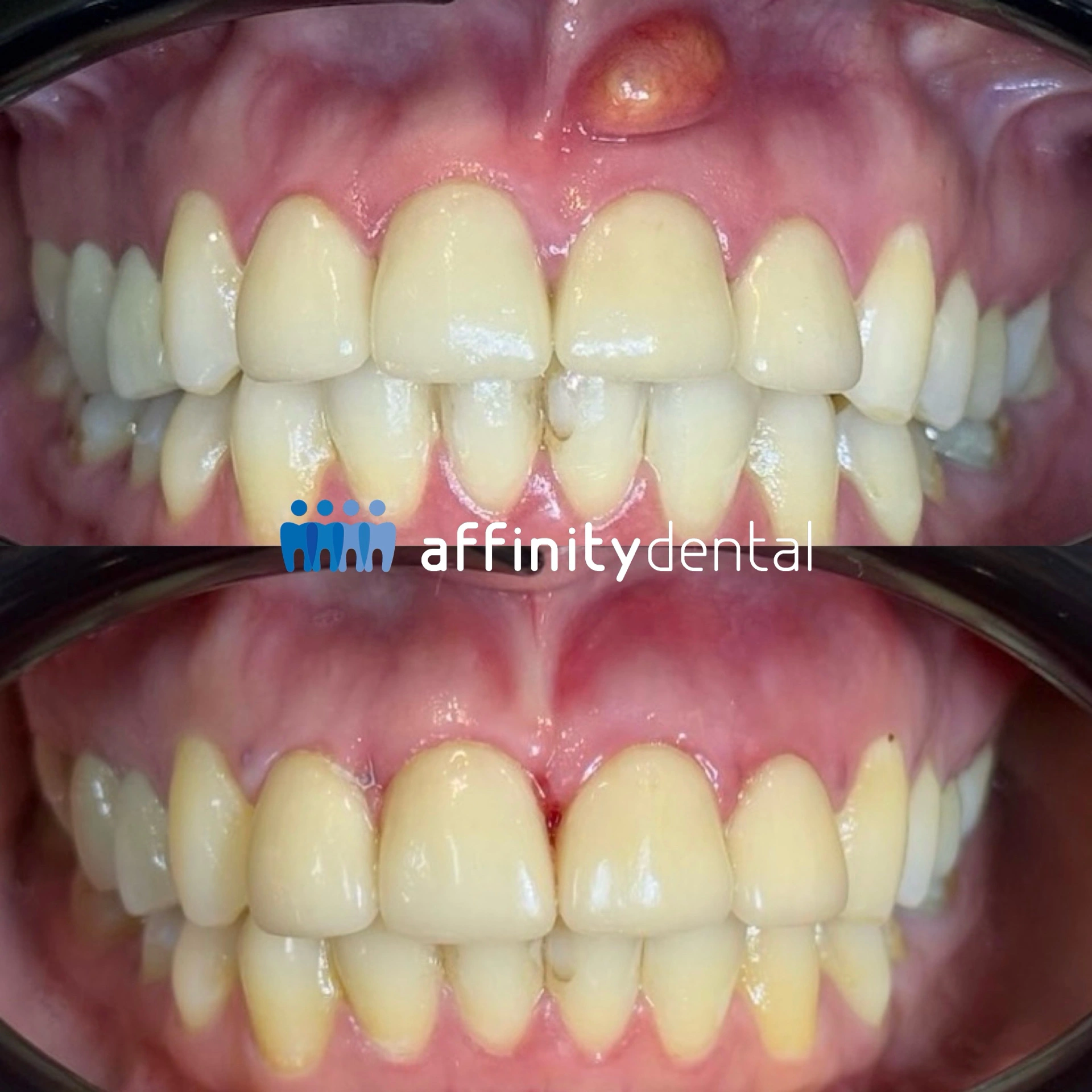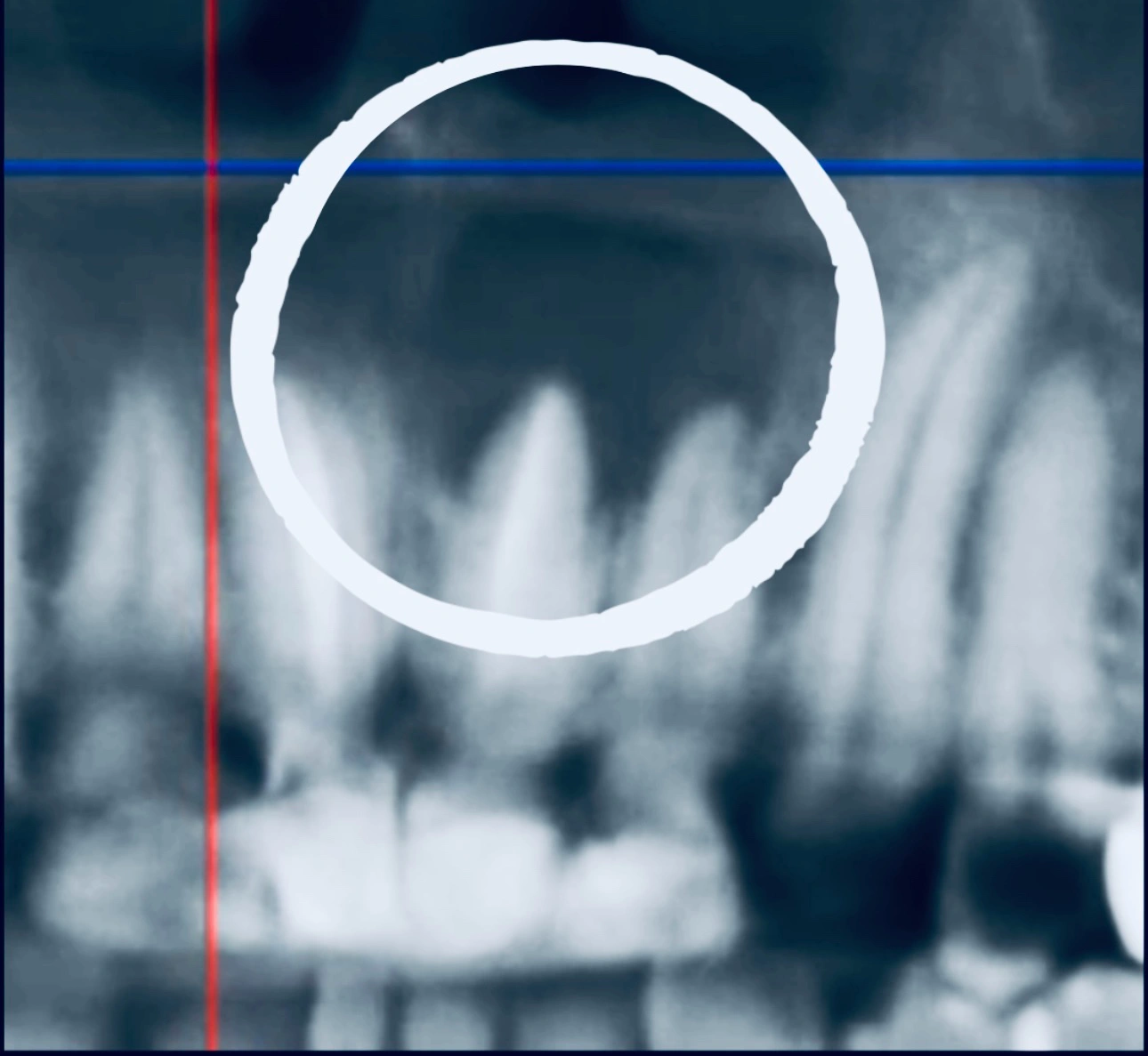
Apicoectomy
Saving Teeth When Root Canals Aren’t Enough
At Affinity Dental Clinics, one of our core beliefs is that every natural tooth is worth saving—if it still has a fighting chance. While root canal treatment is often the go-to procedure for rescuing an infected or damaged tooth, there are cases where even the best root canal cannot completely eliminate the problem. That’s when a specialized procedure called Apicoectomy comes into play.
Performed by our experienced and formally trained Oral Surgeons and Endodontic Specialists, an Apicoectomy in the Philippines is a delicate but powerful way to address lingering issues at the root tip of a tooth that has already undergone root canal therapy. It is, in essence, the last effort to save a tooth before extraction becomes necessary.
What Is an Apicoectomy?
An Apicoectomy—also known as root-end surgery—is a minor surgical procedure where the tip (or “apex”) of a tooth’s root is carefully removed along with surrounding infected tissue. The area is then cleaned and sealed to prevent reinfection.
It is usually recommended when:
• A hidden canal or infection was missed during the initial root canal
• A cyst or lesion has formed near the root tip
• Retreatment through the crown is not possible (due to posts, restorations, or crowns)
Rather than removing the whole tooth, an Apicoectomy allows us to access the problem from the outside of the root—giving your tooth a second chance.
Why an Apicoectomy May Be Your Best Option
Sometimes patients feel discouraged when they learn that their previously treated tooth still has an issue. But this doesn’t necessarily mean the tooth has failed.
Root canals are a meticulous, highly manual process—every root has its twists, turns, and hidden spaces. In fact, many molars have three to five canals, some of which are extremely narrow or curved, making complete disinfection a challenge. Despite best efforts, bacteria may remain in or around the root tip.
An Apicoectomy is often the best conservative approach before opting for extraction and dental implants. It allows our team to directly clean and seal the problematic area without disturbing your crown or previous restoration.
The Apicoectomy Procedure at Affinity Dental Clinics
Here’s what you can expect when undergoing an Apicoectomy at any of our clinics in Makati, BGC, Alabang, Ortigas, Parañaque, or Cebu:
Using digital X-rays and Cone Beam CT Scans, we precisely identify the problem area—examining the root tip, surrounding bone, and any cysts or abscesses.
For your comfort, we perform the procedure under local anesthesia. If you are particularly anxious, Twilight Sedation can be administered by our board-certified anesthesiologist, allowing you to remain relaxed and pain-free throughout.
A small incision is made in the gum near the affected tooth, providing access to the underlying bone and root tip.
The infected root tip and surrounding tissue are removed. The area is then cleaned thoroughly, and the root end is inspected for cracks or defects.
A small filling is placed to seal the end of the root canal, preventing bacteria from re-entering.
The gum is sutured, and healing begins. Most patients recover comfortably within a few days, with minimal swelling or discomfort.

Post-Surgical Care and Healing
At Affinity Dental Clinics, we provide detailed post-operative instructions to ensure smooth recovery:
• Pain is manageable with over-the-counter or prescribed medication
• A soft diet and good oral hygiene aid in faster healing
• Follow-up visits help us monitor healing and remove stitches
Within a few months, the bone around the root begins to regenerate, and the tooth stabilizes.
Success Rates and Prognosis of Apicoectomy
While Apicoectomy is often a “last resort” procedure, its success rate is surprisingly high—especially when performed by skilled specialists using advanced technology.
At Affinity Dental Clinics, we’ve seen excellent outcomes in patients who came to us after struggling with unresolved symptoms following root canal treatment elsewhere. When done correctly and on the right candidates, Apicoectomy can save a tooth for many years—even decades.
That said, we always provide honest, transparent guidance. If the prognosis is poor due to cracks, extensive bone loss, or recurring infections, we will let you know. In some cases, extraction and implant placement may ultimately be the more reliable long-term option.
When Is Apicoectomy Not Recommended?
We always weigh the pros and cons carefully. An Apicoectomy may not be suitable if:
• There’s insufficient bone support
• There’s persistent infection after prior surgical intervention
• The tooth is non-functional or poorly positioned
In these scenarios, we’ll guide you toward the most sensible alternative—whether that’s an extraction, dental implant, or another restorative option.
Why Choose Affinity Dental Clinics for Apicoectomy?
Apicoectomy is a precision procedure—it requires skill, experience, and the right tools. Here’s why patients across the Philippines trust Affinity Dental Clinics:
Your Next Step: Let’s Save That Tooth
If you’ve already had a root canal and are still feeling discomfort, or if your dentist has suggested an Apicoectomy, don’t wait. The longer infection lingers at the tip of your tooth, the more damage it can cause—not just to the tooth but also to the surrounding bone.
At Affinity Dental Clinics, our goal is to preserve your natural teeth for as long as possible using science-backed, compassionate care. We take time to educate you, answer your questions, and help you make decisions you’ll feel good about—today and years from now.

💬 Have questions? We’re here to help.
Whether you’re seeking a second opinion or want to explore your treatment options, you can trust Affinity Dental Clinics to guide you with skill, integrity, and genuine care.
Visit us in Makati, BGC, Ortigas, Alabang, Parañaque, or Cebu
Book an appointment online or through your preferred branch things.
Book an Appointment
One moment, your message is being sent...
Please wait for the confirmation message before going back or closing your browser.
Sub heading
Content Place Here without Image

Content Continuation
Sub heading

Content Place Here without Image
Content Continuation
Sub heading

Content Description
Sub heading

Content Description Numbered
Intro Paragraph
Additional (Optional)
- Items
- Items
- Items
- Items
Component for Direct Content without image
Intro Paragraph
2nd Pragraph Optional
Closing paragraph
Component for Steps Content without image
Intro Paragraph
Text Description
- This list is optional, if the content does not have bulleted items remove the "ul and /ul"
- Items
- Items
Outro Paragraph (Optional)
Component for Steps Content with image

Intro Paragraph
Text Description
- This list is optional, if the content does not have bulleted items remove the "ul and /ul"
- Items
- Items
Outro Paragraph (Optional)
Other design for itemized content
Intro (copy this if there are more paragraphs)
Text Description
Table Title No Image
| Column Heading | Column Heading | Column Heading | Column Heading | Column Heading |
|---|---|---|---|---|
| Row Data | Row Data | Row Data | Row Data | Row Data |
Table Title with Image

| Column Heading | Column Heading | Column Heading | Column Heading | Column Heading |
|---|---|---|---|---|
| Row Data | Row Data | Row Data | Row Data | Row Data |
Frequently Asked Questions
Answer
Answer
Answer






